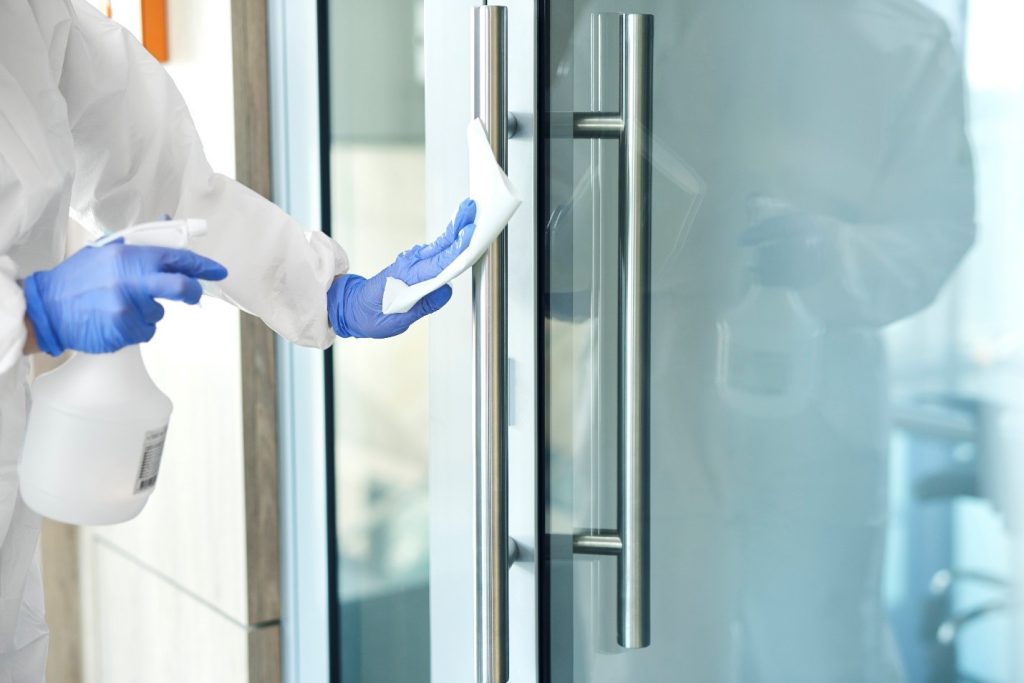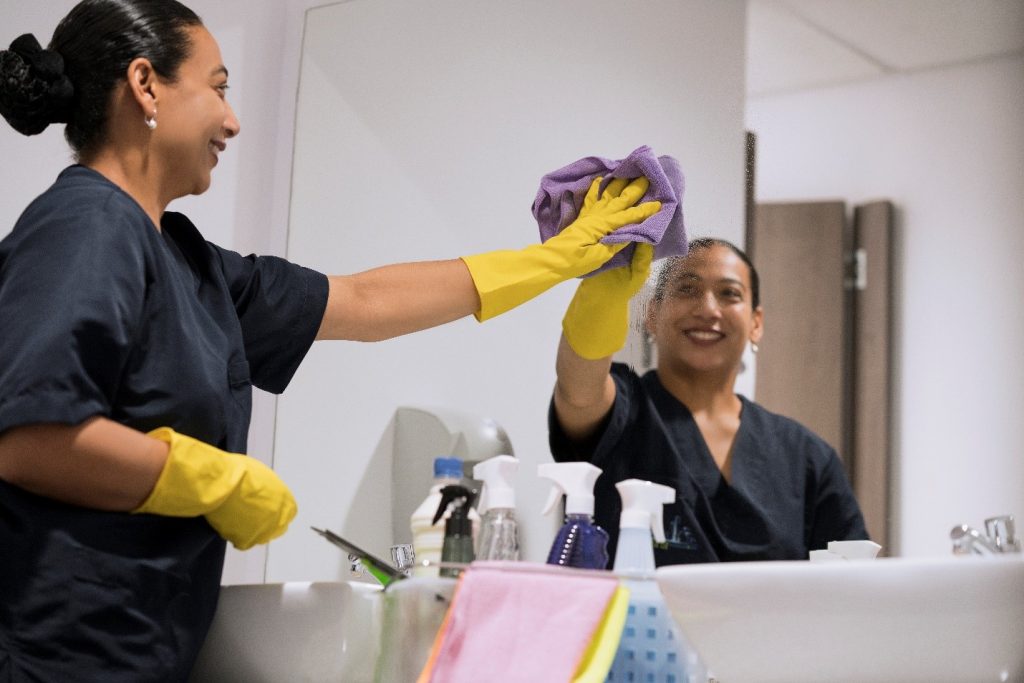With the heightened awareness and focus on disinfection during the Coronavirus health crisis, everyone is focused on improving their cleaning regimen not just in healthcare settings but in all industries, going through the crash course of infection control in environmental services. What used to be practiced by Environmental Services department in healthcare facilities are now being adapted in all types of facilities.

Infection Control
The aim of infection control is to prevent the spread of pathogens from one person to another. Experts suggest that the foundation of a good infection control is to assume that everyone is potentially infectious. Taking this into consideration cleaning companies have to align their cleaning procedures
The advantage of companies or departments that work in healthcare facilities is that they receive guidance from the onsite Infection Control and Prevention Practitioner on the protocol that they need to put in place when there is an outbreak or in this case pandemic. Healthcare facilities also have cleaning protocols that are already in place and followed as required, such as code Z317.12:20 – Cleaning and Disinfection of Healthcare Facilities. On the adverse, non-healthcare facilities have to re-create their cleaning protocols in order to adapt to the changes and requirement of the new normal. With the advent of COVID, people in the cleaning industry now have to go through a crash course on infection control.
Universal precautions must be followed which includes hand hygiene dubbed as the most important measure for preventing the spread of pathogens. For handwashing to be effective, the following needs to be considered: time and technique. The Centre for Disease Control and Prevention recommends spending at least 20 seconds when washing your hands. I remember telling my staff when I used to conduct hand hygiene training to sing the Happy Birthday song when they are washing their hands. This, together with following the proper technique, is necessary in order to remove all dirt and pathogens. An antimicrobial soap is not necessary to achieve effective handwashing. Wearing jewelry such as rings or bracelets are also discouraged as these impede effective hand hygiene.

Personal Protective Equipment – PPE
Another aspect of universal precaution is the use of proper PPE or Personal Protective Equipment (PPE). This could include masks, gloves, goggles, face shields, etc. As with all items of PPE there are specific guidelines for donning (putting on) and doffing (taking off). There are also guidelines when it is appropriate to use them and when they need to be replaced. Not long ago gloves were the only items of PPE that were regularly worn by cleaners – with the exception of those working in healthcare settings. All cleaners now have to wear masks as well, especially if physical distancing is not possible. During this pandemic I have noticed quite a number of people wearing N95 masks and I can’t help but ask myself if they are wearing the right size. To achieve the full benefit and protection of wearing an N95 mask they need to be properly “fit tested”. Depending on the changes to one’s facial structure fit testing should happen every year. With the high demand for masks from front-line healthcare workers it is the “right thing to do” to leave the limited supply of these masks for workers in the healthcare setting as their environment is generally consistently a higher risk.

Disinfectant
COVID-19 has been an eye opener to some cleaning companies and also to facility users and clients. People are now being educated on, and becoming conversant with, different terminologies related to cleaning. The term cleaning used to be an all-encompassing description of making an area free of soil, clutter, debris, etc. There is now a much greater general knowledge on how to use the term with all the guidance that is available from public health authorities. Aside from terminology, cleaning companies are now also aware that they expected not only need to clean but to effectively disinfect as well in order to remove pathogens on surfaces that, if left untouched, can transmit disease.
Awareness of the different types of chemical agents is also crucial. Cleaning companies should know by now that all-purpose cleaners are not the same as disinfectants. These two types of chemicals do different jobs. All-purpose cleaners are mainly for cleaning – meaning they remove dirt and soil on a surface when combined with a modicum of pressure and elbow grease. Disinfectants, on the other hand, removes bacteria, germs and other pathogens from the surface. In short, an item can be clean but not necessarily disinfected, therefore it could remain a vehicle for transmission unless it is disinfected. However, there are chemicals that performs both functions; cleaning and a disinfecting. These type of chemicals are both cost effective and more efficient as they are a one-step process.
“Dwell time” or “contact time” is the amount of time that the disinfectant must remain on the surface being disinfected in order for it to be effective in removing pathogens. Nowadays, most disinfectants claim 5 to 10 minutes dwell time with a few as low as 1 minute. The lower the dwell time the better as that would mean, especially in healthcare setting, that the area or item will be available for the next person to use more quickly.
Cleaning and disinfecting chemicals must also have a DIN (Drug Identification Number). This is a number issued by Health Canada ensuring that the product effectiveness and safety has been appropriately reviewed and approved.
Dilution of the chemical must be checked regularly to ensure that it is dispensed or diluted at the correct strength. To do this a test strip is available from the chemical supplier which acts like a litmus paper to check the concentration of the chemical.

Enhanced Cleaning of High Touch Surfaces
In addition to routine cleaning, additional or “enhanced” cleaning may be required to help prevent the spread of infection during an outbreak or a pandemic. Enhanced cleaning is usually applied to high touch surfaces or areas that are frequently touched by users. These include door knobs/handles, elevator buttons, hand railings, dispensers, sink taps, countertops, etc. It is recommended that increased disinfection of these items is conducted at least twice daily, or more often in areas that are high risk – such as areas open to the public. Shared items, devices, and equipment must also be cleaned and disinfected between uses.

Cleaning Innovation
The cleaning industry has been exploring innovative means to address efficiencies even more than before the advent of COVID. Healthcare Environmental Services, for one, has been testing alternative methods of disinfection to address health and safety issues of its patients and staff and help lower the rates of HAI (Health Care Acquired Infections) due to contaminated surfaces. UV disinfection was piloted in a number of healthcare facilities in British Columbia. Today it’s no longer unusual for an acute care facility to purchase its own UV disinfection unit.
UV light is a form of light that is invisible to the naked eye but can be used to disinfect microorganisms. Demonstrating effectiveness against microorganisms, these technology is being utilized by quite a number of facilities today. UV light provides rapid, effective inactivation of micro-organisms through a physical process. It is a chemical free process making it safer to use instead of chemicals. However, since it’s fairly new on the market, the units are currently expensive.
Robotics is another technology that is gaining traction in the cleaning industry; floor scrubbers and vacuum cleaners that are programmed to run on their own with little to no need for an operator to accompany the machine at all times are now a regular fixture in bigger facilities such as airports, big box retail stores, malls, etc.
Electrostatic sprayers are utilized to apply disinfectant over a large area in less time and achieve higher coverage than regular methods. Cleaning of surfaces to remove soil and debris, however, must be conducted first prior to disinfection. In this case, even if the disinfectant claims to be a one-step process, a two-step process will need to be applied for effective disinfection if using an electrostatic sprayer.
Electrostatic sprayers work by charging the solution as it passes through the nozzle. The mist generated contains positively charges particles that adhere to an envelope all surfaces. This process results in a coating of disinfectant on all sprayed surfaces, including hard-to-reach areas.
These technologies help avoid exposures of the operators or cleaners to micro-organisms and enhance the productivity of the workforce.

Monitoring
Monitoring cleaning processes and procedures to ensure that they are adhered to and complied with is a task that cleaning supervisors must conduct on a regular basis – especially during a pandemic. This is done by conducting a visual audit and recording the results using an app or a basic pen and paper form to check for cleaning quality to ensure that items and areas have been properly cleaned.
Observation audits on the other hand are conducted to ensure that procedures are adhered to by the cleaners. A Supervisor watches a cleaner clean an area to identify strengths and areas for improvements. Strengths are reinforced and areas for improvement are addressed immediately via one on one coaching or re training.
Cleaning quality audit using the aid of a UV marking spray/gel/powder and a UV light have been in place for a number of years in most healthcare facilities. The use of these tools helps validate the cleaning practices in a facility. This method assists FM supervisors and managers identify areas where cleaning performance requires improvement. The marker is applied on a dry surface and the UV light is then used to detect if the mark was removed during the cleaning process to assess whether the area was properly cleaned or not.
Training
Training is crucial in order for a cleaning regimen to be effective. Cleaning crews must be aware and knowledgeable about the different processes and procedures that are in place. Supervisory staff must also undergo training and be abreast of changes, innovations and new processes that are introduced. The janitorial department must be adaptable and be able to respond effectively to all the changes that are taking place. Properly trained staff will perform tasks with confidence in a safe manner which reflects well on the company. Training also helps avoid costly mistakes and increases productivity by ensuring staff are competent in performing their tasks.
As we are easing through pandemic and faced with the “new normal”, the cleaning industry has been cast into the spotlight. The humble cleaner is finally receiving the long overdue recognition he/she deserves. We’ve never really thought about that when we go inside a building. We acknowledge the building systems and people that operate them and make those systems work to keep us safe and comfortable. But we’ve never really thought about the people that clean / disinfect the building as we sit in our clean offices, make a coffee or use the clean washrooms. The humble cleaner is finally being recognized as the (unsung) hero during this COVID-19 crisis. They are part of the essential services within our facilities which would not be able to function properly without them. They provide us with a clean and safe environment to work, play, eat, shop, travel, or seek medical care in. In every place that we go to, or visit, as part of our daily routine, a cleaner has quietly and invisibly left their mark by providing us with a clean and safe space. A virus has made it possible for these members of our workforce to finally be recognized for the essential and important job they do every day – especially in this new COVID world.
About the Author

Elaine Gomez is the P3 Services Manager for Bouygues Energies and Services in Canada supporting Cleaning and Waste, Help Desk, Food Services, Parking and Administration. She has extensive background in housekeeping/janitorial having worked in different industries such as hotels, healthcare, retail, commercial, and offices in both P3 and non P3 contracts. She holds a Bachelor of Science degree in Hotel and Restaurant Management and the CFM designation. Like most people, she has come to grip with the new normal and couldn’t be more proud of all the hardworking janitorial staff.
